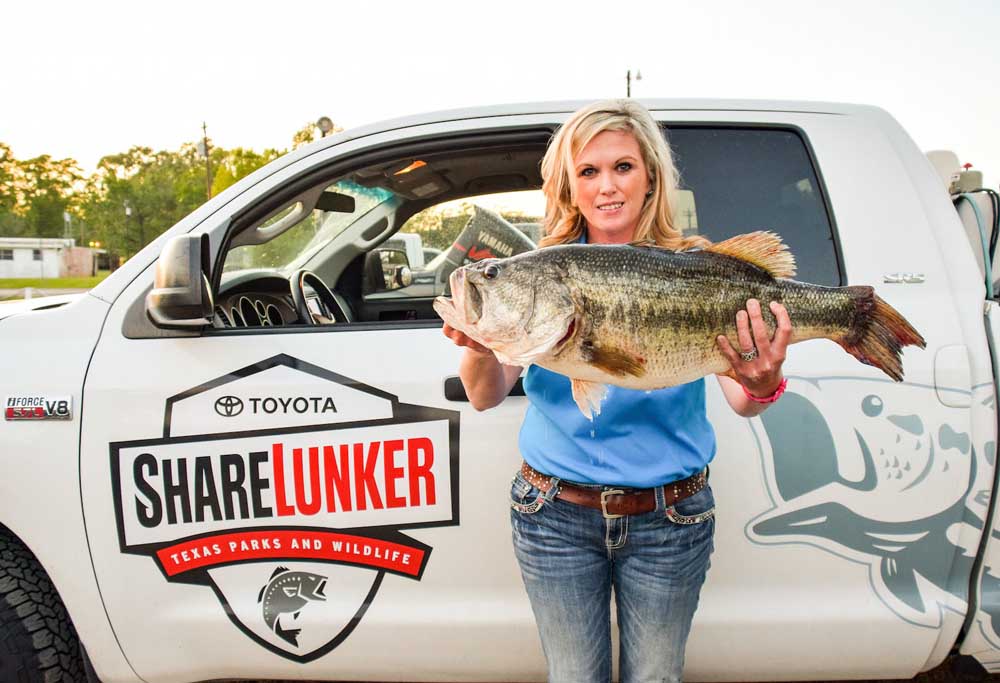Rayburn Claimed Nation’s Best, 11 Other Texas Lakes Cited
Published 12:07 am Friday, July 13, 2018

- Bassmaster Magazine has declared Texas’ Sam Rayburn Reservoir as the best bass fishing lake in the U.S. It earned the title based on tournament results and individual catches like that of Stacy Spriggs, of Huntsville, whose March ShareLunker weighed 13.06.
Texas was well represented in this year’s Bassmaster Magazine’s 100 Best Bass Lakes rankings, starting with top-ranked Sam Rayburn Reservoir.
Rayburn jumped to the top spot after three consecutive years in the top 5. According to the magazine, it has never ranked below 26th in the seven-year history of the poll.
Trending
Although it could be argued that the lake reached a high spot in 2015, based on tournament results that year, Bassmaster editor James Hall said the 114,000-acre reservoir cited tournament after tournament this year with 30-plus-pound winning stringers topped by a 40.28-pound winning weight recorded in June.
The only other Texas lake to make the Top 10 is Falcon Lake at No. 10. The 33,000-acre border lake continues to suffer from low water levels. It is currently sitting at just 31.5 percent pool capacity. Still, it has been showing signs of improved numbers and stringers the last two years, even though it is not back to the quality it had been.
In between the two Texas lakes are Chickamauga Lake, Tennessee; Clear Lake, California; Lake St. Clair, Michigan; Mille Lacs Lake, Minnesota; Santee Cooper lakes, South Carolina; Diamond Valley Lake, California; Thousand Islands (St. Lawrence River), New York; and Lake Guntersville, Alabama.
It is on the list of Central U.S. lakes where Texas really shines, taking 12 of 25 spots. Following Rayburn and Falcon on that list are Toledo Bend, Conroe, Lyndon B. Johnson, Lake O’the Pines, Ray Roberts, Palestine, Caddo, Belton, Texoma and Fork.
The interesting part of this list is that Ray Roberts, impounded in 1987, is the newest lake on the list. On the other extreme, Caddo was initially impounded in 1914, although the dam was replaced in 1971. Rayburn is 53 years old, considered very old by fisheries standards. However, those and the other older lakes making the list raises the question whether lakes really do decline with age, whether they peak, decline and then seem to stabilize and become consistently good or whether Florida bass stockings and regulations are a game changer.
“I don’t think these reservoirs have improved with age necessarily, but they’ve managed to stay young longer. These reservoirs are the Jack LaLanes of reservoirs,” said Spencer Dumont, Texas Parks and Wildlife Department Inland Fisheries regional supervisor.
Trending
Dumont said on lakes like Rayburn and Toledo Bend, the keys are the Florida bass, habitat and reservoir size.
“Florida bass increased lunker bass potential, habitat, namely hydrilla, has been consistent and plentiful, and their massive size thins out the overall pressure and allows more fish to find offshore refuge from fishing pressure,” Dumont said.
In a profile on Rayburn, TPWD Inland Fisheries district biologist Todd Driscoll said the lake level operating guidelines established by the U.S. Army Corps of Engineers and the Lower Neches Valley Authority are perfect for bass production on the lake.
“On average, water level fluctuates 6 to 8 feet each year. High water during winter and spring inundates a variety of terrestrial vegetation during the bass spawn, which results in high survival of hatched bass,” Driscoll writes.
When lake levels are down in the summer and fall, he said there is still plenty of aquatic vegetation for cover, and that the vegetation now out of the water like willows are able to reestablish for the next round of spawning.
Driscoll also noted that the lake has been stocked with Florida bass since 1975. Beginning in 1994, stockings have been annual with the lake typically receiving 500,000 or more in most of those years. More than 19 million Florida bass have been stocked in the lake.
All is not perfect on Rayburn. It does have infestations of giant salvinia and water hyacinth, both of which can reduce water quality and boating access. There are vegetation spraying programs to reduce the two, but because some portions of the lake are not accessible to spray boats, it will probably always exist. The size of the lake, however, offsets a lot of problems caused by the plants.
While any best-of list is going to be subjective and always grounds for discussion, even Texas fishermen have to be scratching their heads about some of the Texas lakes on the list, including Lake O’the Pines, which finished eighth, four spots ahead of Lake Palestine, and Belton (21), a 12,000-acre lake located along the Leon River in Bell County.
“I can’t tell you why Lake O’the Pines is on the list. It’s a solid lake and consistent from year to year. Like Toledo Bend and Rayburn, it’s productive and has good habitat,” Dumont said.
As for the entire Central regions lakes, the list includes: 1. Sam Rayburn; 2. Mille Lacs Lake; 3. Falcon; 4. Toledo Bend; 5. Sturgeon Bay, Wisconsin; 6. Conroe; 7. LBJ; 8. Lake O’the Pines; 9. Millwood Lake, Arkansas; 10. La Cygne Lake, Kansas; 11, Ray Roberts; 12. Palestine; 13. Grand Lake O’the Cherokees, Oklahoma; 14. Lake of the Ozarks, Missouri; 15. Lake Dardanelle, Arkansas; 16. Bull Shoals, Arkansas; 17. Caddo; 18. Newton Lake, Illinois; 19. Lake Ouachita, Arkansas; 20. Lake Oahe, South Dakota; 21. Belton; 22. Table Rock, Missouri/Arkansas; 23. Lake Chicot, Arkansas; 24. Lake Texoma; and 25. Lake Fork.



